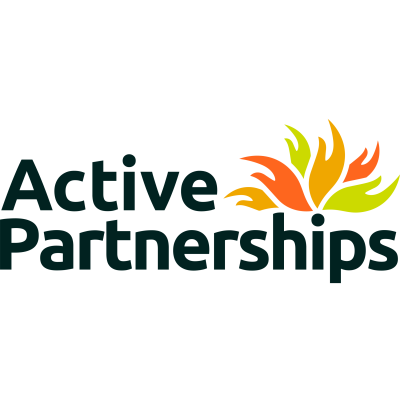Speaking on the 15 April, the Government chief medical adviser, Chris Whitty, stressed the importance of exercise to public health. He said being physically active was “very important to long-term health” and crucial for keeping people fighting fit during the ongoing pandemic.
He went on to say that, “There is no situation, there is no age and no condition where exercise is not a good thing, anything that can be done to encourage – and to allow – people to take exercise is clearly a good thing…..one of the very limited range of reasons people could leave their houses – and still be protecting the NHS and saving lives – was for exercise.” The Government knows that exercise is essential to maintaining the health of the population and diverting demand from vital NHS resources.
As such the “Right to exercise” has become a societal right that has become part of the COVID pandemic experience. A right perhaps that was barely previously recognised has become a right to uphold, defend and as we have seen in the media; to be challenged on. It has become the mainstay for many people’s lives; providing structure and a sense of purpose and community. Exercise has been a lifeline to many and a saviour for individuals who otherwise would have been at risk through their isolation and mental health challenges. I know people who are replacing their daily commute with a walk to give their working day some structure.
Rediscovering exercise is the surprise of the COVID crisis and needs to be recognised amongst the terrible personal stories and emerging deep impact on our economy.
The public response to this “Right to exercise” has been incredible, the Guardian declared that “Bicycles are the new toilet paper”: as bike sales boom as coronavirus lockdown residents crave exercise or a new way to commute safely to work avoiding public transport and get some fresh air in our recently sunny weather. Our Parks and streets have been a haven for communities to walk, run and be communally active. Neighbours have become newly found friends and communities are finding new ways to self-activate using social media with shared challenges and activities that promote the 5 ways to wellbeing. If you stand back, on the face of it, COVID has changed behaviours where public policy and major investment has failed to make major impacts. Colonel Tom with his 100 laps of his garden has been an inspiration to all ages and abilities to take on the challenge, practice self-care through movement and exercise the right to be active.
What do the figures say?
The latest pre COVID figures (up to Nov 2019) from the Sport England Active Lives survey show the highest levels of recorded activity; 63.3% of adults are active (doing at least 150 mins / week of activity). https://www.comresglobal.com/polls/sport-england-survey-into-adult-physical-activity-attitudes-and-behaviour-3/
The Recent Sport England insight produced by Savanta ComRes in their survey into Adult Physical Activity, Attitudes and Behaviour (April 2020), show that during the COVID crisis, people are reporting similar levels of physical activity and that at this moment in time 34% are doing more and 38% less.
Key information for us to consider are the emerging gender gap as males are more likely to be exercising more in general (currently 37% compared to 32% female).
There has also been a significant change in the types of exercise chosen, with a move away from online at the start of COVID (Joe Wickes was the most popular influencer) to outdoor exercise and activity; probably in response to people being confident to exercise their right to be active outside the home and the good weather!
The figures indicate the transition to being active at home has largely been a success and the evidence of what works has shown the value of community, grassroots initiatives, social media challenges and people of all walks of life sharing and supporting.
Looking forward
As we look forward through the crisis, managing stress, anxiety and depression as a result of us readjusting to our new “normal” will be the major challenge for us individually in our personal lives and for our employers as they seek to maintain the long term productivity of the workforce. Physical activity has been shown by Public Health England to be as effective in managing low mood and anxiety as talking therapies and anti-depressants; it is a treatment that is easily accessible and low cost; a prevention and a treatment. It is something we should promote to ourselves, our friends and families.
Clearly, new patterns of life will emerge; our collective challenge is that over the longer term, physical activity as a desire and an action becomes hardwired into the brain to protect our collective physical and mental health.
The NHS is concerned that many people, particularly those shielding or those with underlying health conditions are not accessing primary and emergency health care; A&E attendances are in many cases down by 60%. The groups withdrawing from accessing healthcare are also likely to be the groups also withdrawing from being physically active: older people, people on low incomes, people who are self-isolating because they are at increased risk due to their age or health conditions. These groups will need continued support to maintain their physical and mental health and address deterioration in their conditions; physical activity can be a key component of them staying well and managing their conditions well. Advice from the World Health Organisation supports people with health conditions to keep active: https://www.who.int/news-room/campaigns/connecting-the-world-to-combat-coronavirus/healthyathome/healthyathome---physical-activity
Follow the Government COVID 19 advice: Exercise your right to keep active
We must continue to follow the Governments advice on social distancing for the time being and respect the lock down measures which will clearly be with us for some time yet.
However, we also need to follow their advice to be active in a responsible manner, to look after our long term physical and mental health. We need to value and exercise our right to be physically active and to promote this right with our friends, families and work colleagues; particularly those who may not reach out to mainstream health services at this time.
Active Lancashire are running the #ALittlebitmoreathome campaign to get our communities physically active and to encourage people to engage with the Five Ways to Wellbeing to improve mental and physical health. Further guidance can be found on our website here: https://www.activelancashire.org.uk/COVID-19-Support
Adrian Leather
CEO Active Lancashire




